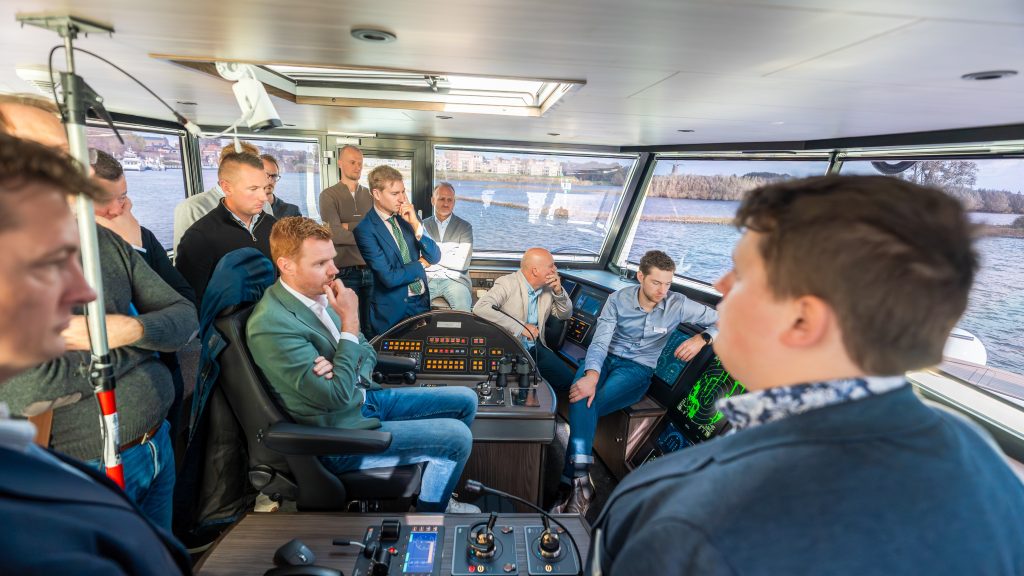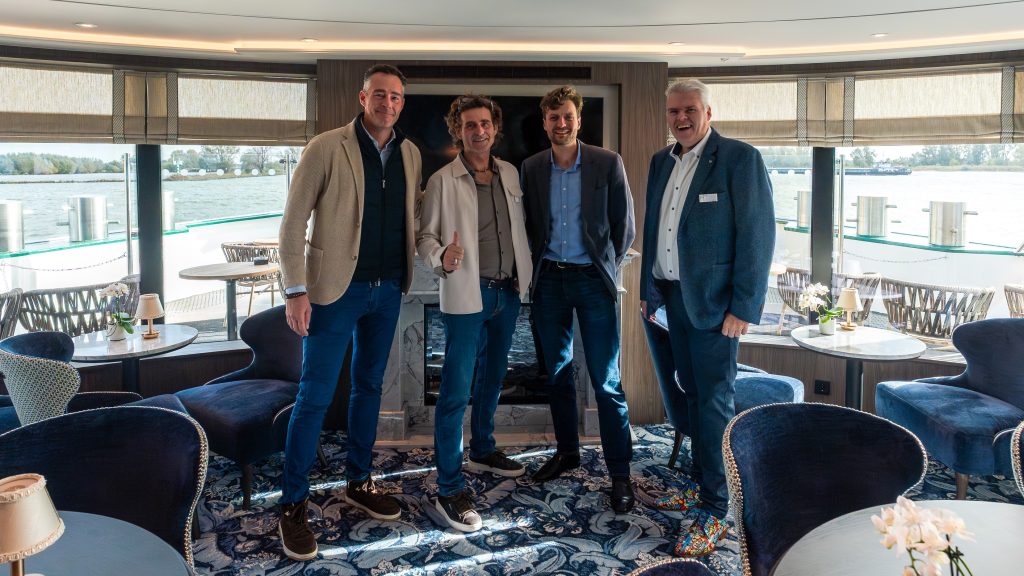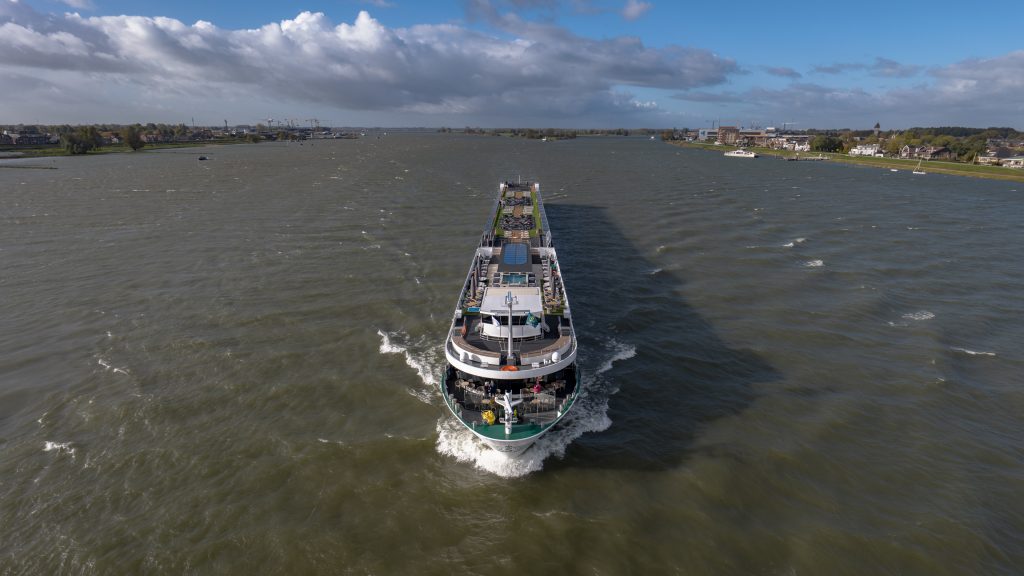First successful autonomous ‘dock2dock’ voyage demonstrated on river cruiser MS Lumière
A major, and global, milestone for autonomous inland shipping was reached on Friday 24 October 2025. During a live showcase on board Scylla’s brand-new passenger vessel MS Lumière, Shipping Technology, Retina, and Scylla successfully completed the first-ever autonomous Dock2Dock voyage – from undocking in Hardinxveld- Giessendam to docking in Gorinchem.
The demonstration combined Retina’s M-Pilot manoeuvring system with the ST BRAIN and Autonomous Lane Assist (ST Sailing) from Shipping Technology, enabling the vessel to undock, sail and dock autonomously under real-world conditions (even a gale-force crosswind of Beaufort 8 did not affect the ship’s course!). Throughout the route, the captain
remained in full control and supervision, always ensuring safety.
“With the Dock2Dock project, we’re proving that autonomous technology is no longer futuristic – it’s happening now. Safely, efficiently, and sustainably,” says David Woudenberg, Head of Product Development at Shipping Technology. “It’s not about removing the captain; it’s about giving crews smarter tools for safer and more efficient navigation. And about reducing fuel consumption.”
A first-of-its-kind demonstration

The live showcase demonstrated seamless cooperation between advanced maritime
systems:
● Autonomous undocking powered by Retina’s M-Pilot, in combination with Shipping Technology’s ST BRAIN
● Autonomous Lane Assist (ST SAILING) for the main trip
● Autonomous docking, with the captain overseeing each phase of the voyage
During the showcase, the Retina M-Pilot controlled both the thrusters and the engines of the river cruise vessel, working seamlessly with Shipping Technology’s ST BRAIN and Autonomous Lane Assist (ALA). Together, these systems guided the vessel along the optimal route from A to B, automatically managing rudder and pod movements with remarkable precision.
“This is particularly relevant for vessels with Z-drives. The system measures what happens 10 times per second, allowing controlled and safe operations. Experienced captains will have more time for other tasks; less experienced crew will feel better supported,” says Tom Panjer, Founder of Retina BV. “Also, and let me be very clear about this: reliable data is essential, but people must stay in control.”
Precision and control
The pilot system continuously factors in variables such as vessel load, engine RPM, and desired turning acceleration to determine the most efficient steering response. By integrating directly with the propulsion system – a major step forward – the technology now also opens the door to future ‘just-in-time sailing’, reducing fuel consumption and supporting more sustainable operations.
Tom: “The M-Pilot working together with the ST BRAIN performed exactly as intended, and that’s a true turning point for automation in inland shipping. The M-Pilot and ST BRAIN combination allows vessels to manoeuvre and sail autonomously while maintaining full control.”
The MS Lumière, operated by Scylla, entered service only two weeks before the event, making it the ideal platform to demonstrate how modern vessels can integrate advanced autonomy and data technology from day one. Following the voyage, guests, partners and media joined the crew on board for networking and discussions on the future of smart navigation.
From talk to action

Tom: “In the market, there’s a lot of talk about autonomous sailing, but very little real demonstration, and most of that is about remote-controlled navigation. That’s why this
showcase matters. Normally, captains turn off their track pilot when approaching or leaving a berth – now, that process itself can be automated, with the captain staying fully in charge. It means more focus on navigation, less on manual controls, and a big step toward practical autonomy.”
One could say that Shipping Technology focuses on where you want to go and how you want to get there. Retina looks at how to control the vessel: making sure a ship arrives at its
destination in a controlled and safe way. “That’s the essence of our collaboration, says David.”
He continues: “I’m proud of our team and of showing what’s possible when companies focus on collaboration and learning, rather than on perceived future challenges.”

